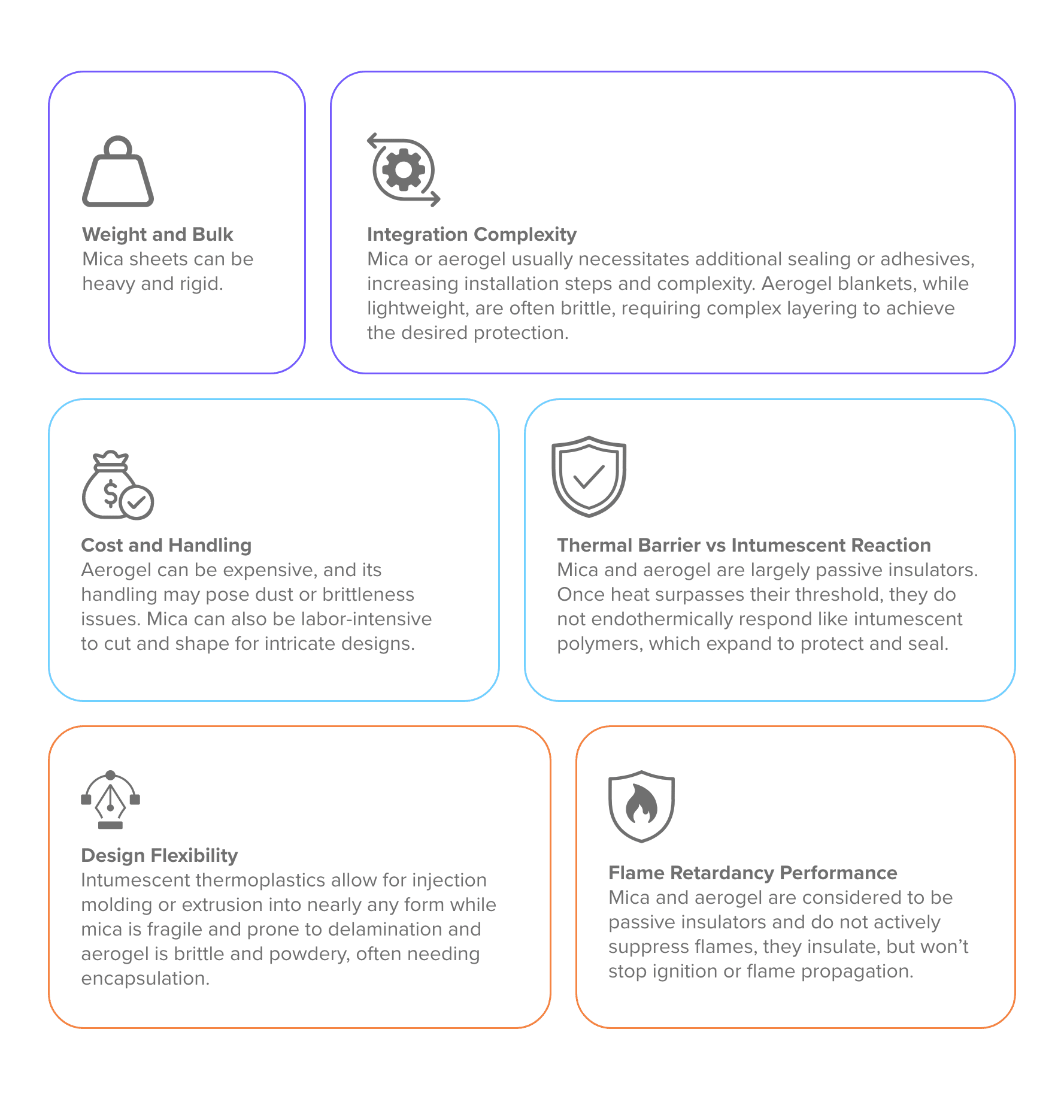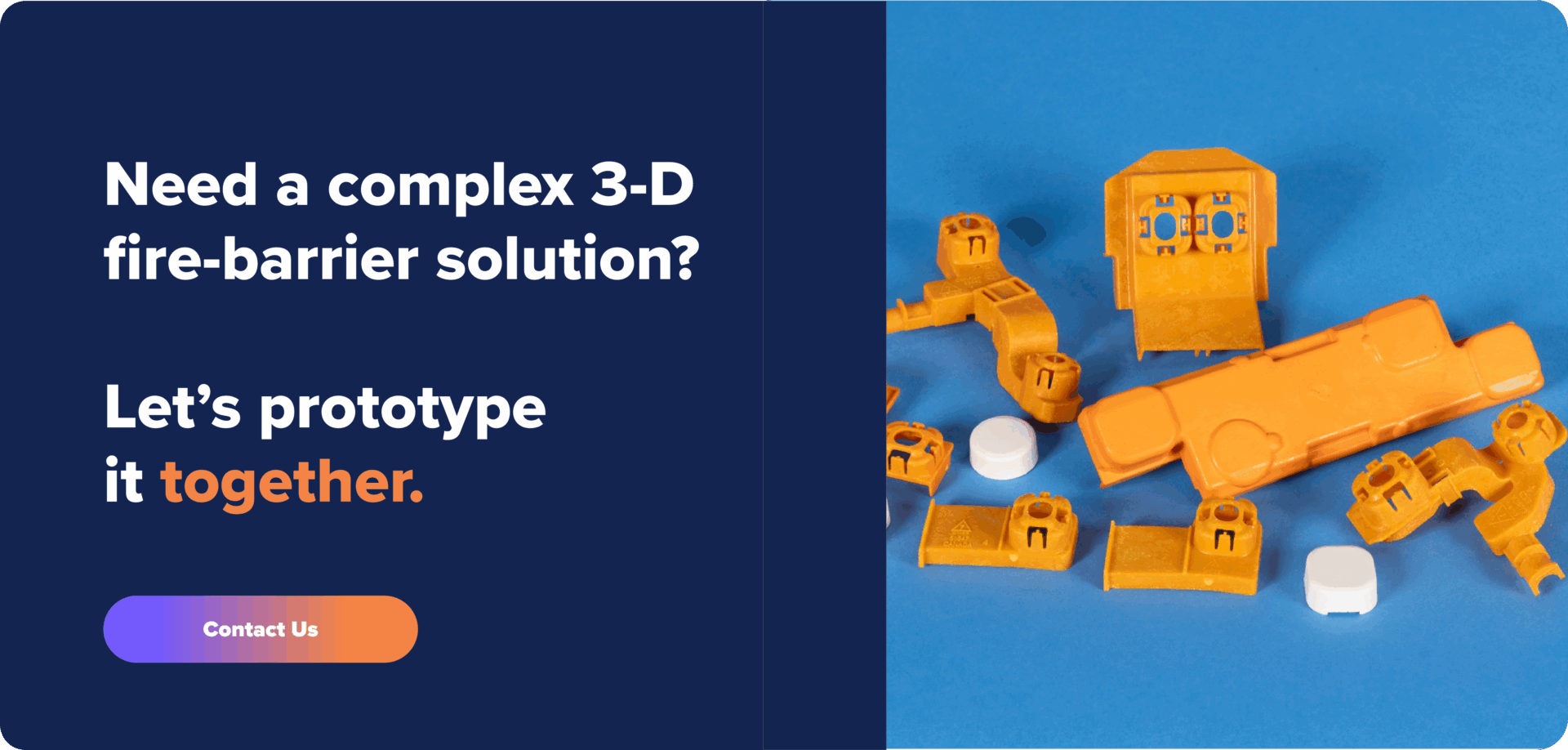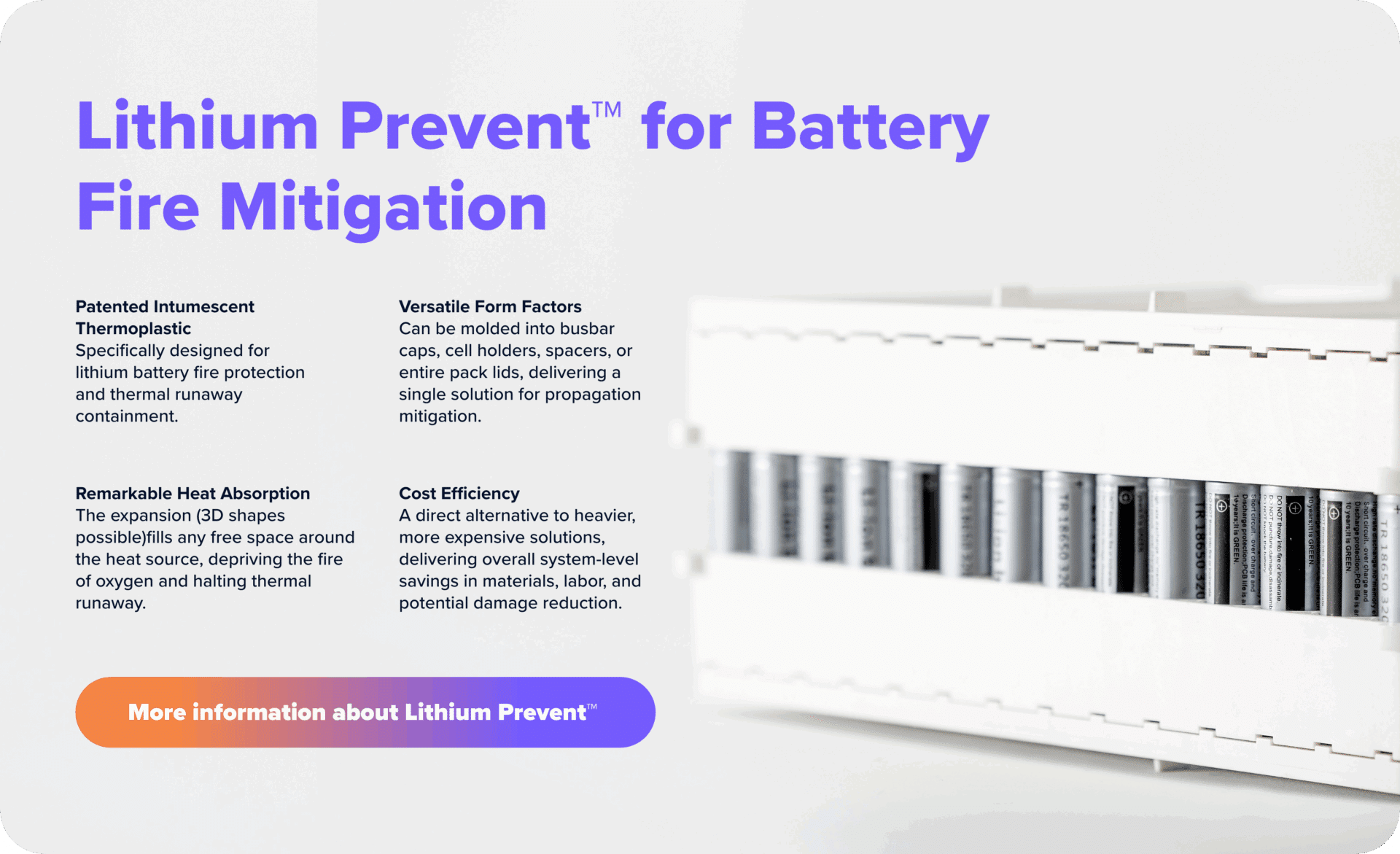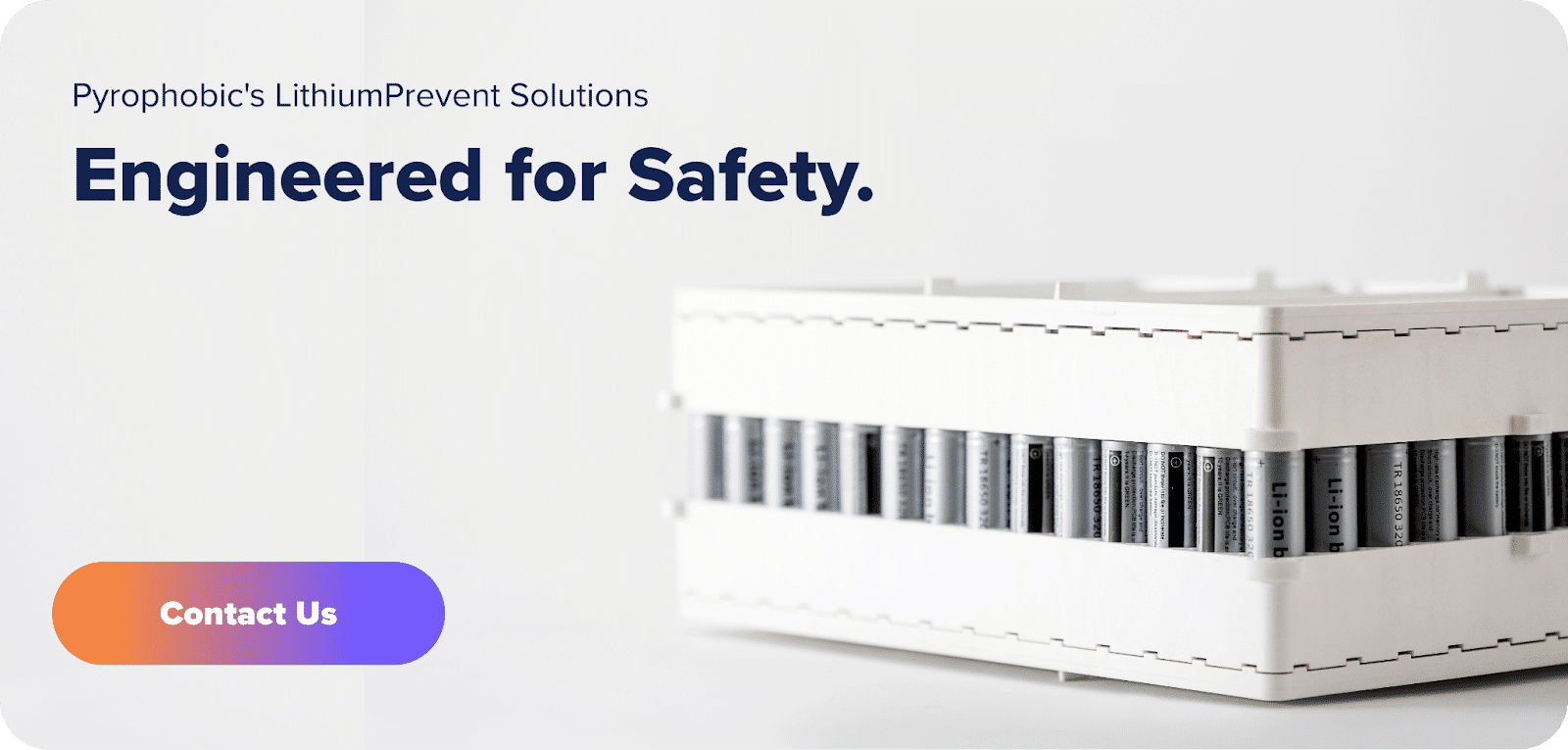In an era where safety standards are more stringent than ever, engineers in building construction, energy storage (ESS), and electric vehicle (EV) markets face mounting pressure to ensure both compliance and real-world reliability. The market is flooded with materials claiming to be “fire resistant” or “fire retardant,” yet few can address the full spectrum of challenges posed by high temperatures, rapid thermal events, and the dreaded phenomenon of thermal runaway. Enter intumescent polymers—innovations that embody the future of passive fire protection and thermal runaway mitigation.
This blog post aims to demystify these materials and explain how the new intumescent solutions outperform legacy materials such as mica and aerogel. By the end of this blog post, you will not only understand the science behind intumescent thermoplastics but also discover precisely how they can revolutionize fire safety in your applications—whether you work in building construction, energy storage, and electric vehicle markets.
The Rising Importance of Fire Safety Across Industries
From skyscrapers and hospitals to EV battery packs and energy storage systems, fire safety is no longer a secondary design consideration; it is an integral component at every stage of product development. The growth in high-density energy devices —particularly lithium-ion batteries— has propelled the need for thermal runaway propagation mitigation. The objective? To create passive fire protection systems that isolate dangerous thermal events, confine them, and prevent them from igniting adjacent cells or spreading to the rest of the facility.
Traditional solutions have included coated metals, fire-resistant plastic enclosures, and layered composites (e.g., fiberglass-laminated panels). However, the rapid changes in regulations and the surge in demand for more robust, space-saving, and cost-effective passive fire protection solutions have driven engineers to consider new materials and solutions. This is where intumescent thermoplastics shine, offering exceptional fire resistance, heat absorption, and the ability to contain and prevent thermal runaway.
Intumescent Thermoplastics and Polymers: An Overview
Intumescent thermoplastics are engineered plastics that possess the remarkable characteristic of expanding—some formulations up to 20–80 times their original volume—when exposed to high temperatures or direct flame. This expansion forms an insulating layer that helps thermal runaway containment by creating a char layer that protects the substrate and contains thermal events.
Key properties of intumescent polymers include:
- Thermal Expansion: Intumescent polymers swell significantly when exposed to heat, forming a robust insulating char layer that physically separates heat sources from vulnerable components.
- Heat Absorption: The expansion process is often endothermic, meaning it absorbs heat energy—helping reduce local temperatures and delaying thermal escalation.
- Structural Stability: Unlike standard flame-retardant plastics, intumescent plastics can maintain their structural integrity at elevated temperatures long enough to preserve containment and prevent fire spread.
- Design Flexibility: Some of these materials can be injection molded or extruded into complex geometries such as busbar caps, battery cell holders, or poke-through electrical firestop devices—enabling fire-safe designs without compromising form or function.
- Enhanced Fire Resistance: While many flame-retardant plastics aim for UL 94 V-0 classification (which indicates self-extinguishing behavior), intumescent polymers go further—demonstrating resilience under more demanding fire scenarios such as time-temperature curves representative of real-world thermal runaway events in energy storage systems.
These properties differentiate intumescent polymers from standard flame-retardant plastics (which may only delay ignition) and make them especially suited for passive battery fire containment and other high-risk applications.
How Intumescence Works: The Science Behind the Swelling
To appreciate how intumescent polymers can transform fire safety, it is critical to understand the chemical process behind intumescence. In broad strokes, intumescence occurs when certain additives within the polymer begin to degrade (at a specific “trigger” temperature) into gases and protective char layers. Here’s a simplified breakdown:
- Thermal Decomposition: Heat initiates the decomposition of intumescent additives, water vapor, and gas.
- Volumetric Expansion: These gases expand within the polymer, swelling into a foam-like char.
- Char Formation: The polymer forms an insulating char barrier that helps shield underlying materials from heat.
- Oxygen Deprivation: By filling the space around the heat source, the swollen polymer reduces oxygen availability, slowing or extinguishing the fire.
In practice, this process can be engineered to happen at various temperature thresholds, making intumescent polymers highly versatile. Pyrophobic’s formulations, for example, are meticulously tested to ensure efficient fire-retardant plastic performance without compromising mechanical properties under normal use conditions.
Design Freedom: 3-D Shapes—Not Just 2-D Sheets
Unlike mica or aerogel—which must be cast, cut, stacked, and taped into position—Pyrophobic’s intumescent thermoplastics can be injection-molded, over-molded, or extruded into 3 dimensional shapes.
Real case example about how 3-D moldability is a game changing
In a high-voltage EV pack, copper busbars sit only millimetres from live terminals. An arcing fault can reach 1,500°C in micro-seconds. Typical Engineered Plastics can create conductive gases when they degrade which can lead to arcing within a battery pack, similar to lightning in a volcanic eruption. Pyrophobic collaborated with an OEM to injection mold a wrap-around busbar cap with the following features:
- High dielectric strength deters arcing that can start a thermal runaway event or ignite other plastics in the pack.
- Reduced air pollution: The composites include a high loading of hydrated minerals that decompose to release water vapor to dilute the flammable gases in and or around battery packs.
- Surface material undergoes phase change to shield critical components leaving a reserve of insulative material underneath.
- Intumescent reaction starting at 200°C triggers endothermic reaction creating fire resistant properties of the material (eliminates fuel source), 2-3x expansion ratio.
- Isolates areas that are in thermal runaway by creating thermal separation by creating an insulating layer against fire.
Real-World Applications and Industry Requirements
Energy Storage Systems (ESS) & Lithium-Ion Batteries
Energy Storage Systems used in solar farms, data centers, and grid-scale backup solutions depend on tightly packed lithium-ion cell arrays. A key safety risk is thermal runaway propagation, where a single failing cell can trigger a chain reaction across neighboring cells and modules. Pyrophobic’s Lithium Prevent™ utilizes proprietary intumescent technology to rapidly expand around a failing cell, starving it of oxygen and creating a physical barrier. This targeted containment at the cell level helps mitigate the initial failure before it spreads.
However, as systems scale, module-level containment becomes just as crucial. When one cell enters thermal runaway, the resulting heat and pressure can compromise not only adjacent cells but the structural integrity of the entire battery module. Intumescent thermoplastic solutions engineered at the module level can absorb extreme heat, reduce thermal bridging, suppress electrical arcing, and isolate the affected unit—providing a second layer of protection that prevents escalation to container- or facility-level fires.

Electric Vehicle (EV) Battery Packs and Automotive Fire Safety
From high voltage busbar arcing to cell to cell thermal runaway, automotive engineers grapple with numerous fire safety challenges. Electric vehicle OEMs demand robust, lightweight materials that do not compromise on safety. Traditional strategies for automotive thermoplastic components might involve layered insulations or bulky covers. These solutions are often heavy and raise production costs.
Intumescent thermoplastics open an entirely new realm of possibility. Components like busbar covers, cell spacers, and pack lids can be injection molded from intumescent polymers, providing an all-in-one solution for electrical arcing protection, heat absorption, and improved occupant safety. By forming a protective char when exposed to high heat, these materials can contain thermal runaway events at their origin, giving first responders and occupants critical time to address the situation.

Pyrophobic’s Intumescent Polymer Solutions
Pyrophobic Systems Ltd. has been at the forefront of passive fire protection for over three decades, bringing extensive research in intumescent thermoplastics to market with a suite of specialized products. Below is an overview of some of our flagship solutions.
Lithium Prevent™ for Battery Fire Mitigation
- Patented Intumescent Thermoplastic: Specifically designed for lithium battery fire protection and thermal runaway containment.
- Versatile Form Factors: Can be molded into busbar caps, cell holders, spacers, or entire pack lids, delivering a single solution for propagation mitigation.
- Remarkable Heat Absorption: The expansion (3D shapes possible) fills any free space around the heat source, depriving the fire of oxygen and halting thermal runaway.
- Cost Efficiency: A direct alternative to heavier, more expensive solutions, delivering overall system-level savings in materials, labor, and potential damage reduction.
- More information about Lithium Prevent™: https://pyrophobic.com/products/lithium-prevent/
Why Choose Intumescent Polymers Over Mica or Aerogel?
Mica and aerogel are established materials in fire safety solutions. Yet, the evolving demands of modern applications expose the limitations of these traditional options:
- Weight and Bulk: Mica sheets can be heavy and rigid.
- Integration Complexity: Mica or aerogel usually necessitates additional sealing or adhesives, increasing installation steps and complexity. Aerogel blankets, while lightweight, are often brittle, requiring complex layering to achieve the desired protection.
- Cost and Handling: Aerogel can be expensive, and its handling may pose dust or brittleness issues. Mica can also be labor-intensive to cut and shape for intricate designs.
- Thermal Barrier vs Intumescent Reaction: Mica and aerogel are largely passive insulators. Once heat surpasses their threshold, they do not endothermically respond like intumescent polymers, which expand to protect and seal.
- Design Flexibility: Intumescent thermoplastics allow for injection molding or extrusion into nearly any form while mica is fragile and prone to delamination and aerogel is brittle and powdery, often needing encapsulation.
- Flame Retardancy Performance: Mica and aerogel are considered to be passive insulators and do not actively suppress flames, they insulate, but won’t stop ignition or flame propagation.

In contrast, Pyrophobic’s intumescent thermoplastics offer not only comparable or superior insulation but also an endothermic characteristic via expansion. This means you get more than just an inert barrier: you get a smart material that responds dynamically to heat, forming an oxygen-shielding char layer.
A Closer Look at Compliance, Standards, and Testing
Engineering decisions are driven by stringent codes, including UL 263, ASTM E814, ASTM E119, UL 10C, UL 94, UL 1973, and various automotive-specific standards. Here is how Pyrophobic’s solutions measure up:
- UL 263 / ASTM E814: Relevant to firestop penetration tests. Our Safe Passage™ and FireBlok™ are specifically tested under these standards, exhibiting expansions up to 40x.
- ASTM E119 / UL 10C: Key to door and wall assemblies, where our TemprCore™ and Bernograph™ demonstrate multi-hour fire resistance.
- UL 94: Pertinent for plastic flammability classifications. Our intumescent polymers are designed to achieve high-level ratings (V-0 in many cases), ensuring minimal risk of flame spread.
- UL 1973: Pertinent for stationary battery systems. Lithium Prevent™ meets or exceeds relevant subsections for thermal runaway containment in lithium-ion batteries.
- Automotive Norms: Standards vary by region (e.g., FMVSS in the U.S., ECE R100 in Europe). Our intumescent thermoplastics are tested to ensure compliance with the flammability and electrical safety norms demanded by major automotive OEMs.
Beyond merely “checking the boxes,” Pyrophobic invests in continuous R&D and real-world testing. We partner with leading certification labs to validate performance under extreme conditions, from high-voltage battery pack abuse tests to multi-story building fire scenarios.
Cost-Effectiveness and ROI of Intumescent Thermoplastics
Often, engineers and product development managers weigh the upfront costs of new materials against potential cost savings throughout the product’s lifecycle. Intumescent polymers from Pyrophobic can translate into:
- Fewer Components: Integrating structural support and fire protection into a single material reduces the need for multiple layers of insulation, adhesives, and mechanical fasteners.
- Reduced Weight: Lighter assemblies mean lower shipping costs, easier handling on the production floor, and—in the case of vehicles—improved energy efficiency.
- Quick Installation: Products like Safe Passage™ and FireBlok™ come pre-molded, minimizing on-site labor during installation in walls or electrical boxes.
- Lower Maintenance: Intumescent polymers are not prone to the same wear or delamination issues as some multi-layered solutions, extending service life.
- Risk Mitigation: A single thermal runaway event in an EV battery or an ESS can lead to massive property damage or brand reputation harm. Investing in thermal runaway propagation mitigation pays off in the form of fewer recalls, safety incidents, and insurance claims.
When analyzing Total Cost of Ownership (TCO), intumescent solutions frequently outpace older materials by offering both direct and indirect savings—especially critical for high-volume manufacturers and large-scale projects.
Future Innovations: Where is Intumescence Headed?
As industry demands continue to evolve, Pyrophobic remains committed to advancing the boundaries of intumescent thermoplastics.
As the conversation around passive fire propagation protection grows, the synergy between material science and industrial design will only deepen. Intumescent thermoplastics are poised to meet the challenges of a world that increasingly demands safer, lighter, and more efficient solutions.
Conclusion
Intumescent thermoplastics and polymers represent a paradigm shift in how we protect buildings, energy storage systems, and electric vehicles from the grave dangers of thermal runaway, electrical arcing, and structural fire. By actively expanding in response to heat, these smart materials provide a higher level of propagation containment and fire retardance than traditional solutions like mica or aerogel. They are also easier to integrate, more cost-effective, and excel in meeting stringent UL, ASTM, and automotive standards.
At Pyrophobic Systems Ltd., we have spent over three decades perfecting these technologies—offering products like TemprCore™, Bernograph™, Intuplas™, Safe Passage™, FireBlok™, and Lithium Prevent™—each engineered to address the real-world pain points engineers and project managers face every day.
Now that you’ve seen the power and potential of intumescent thermoplastics, the next step is to learn how these solutions can be tailored to your specific needs, be it active battery fire containment, thermal runaway propagation mitigation, or advanced fire-resistant plastic for construction. Don’t wait until you’re dealing with costly recalls or code violations; invest in robust, proven fire safety technology now.








